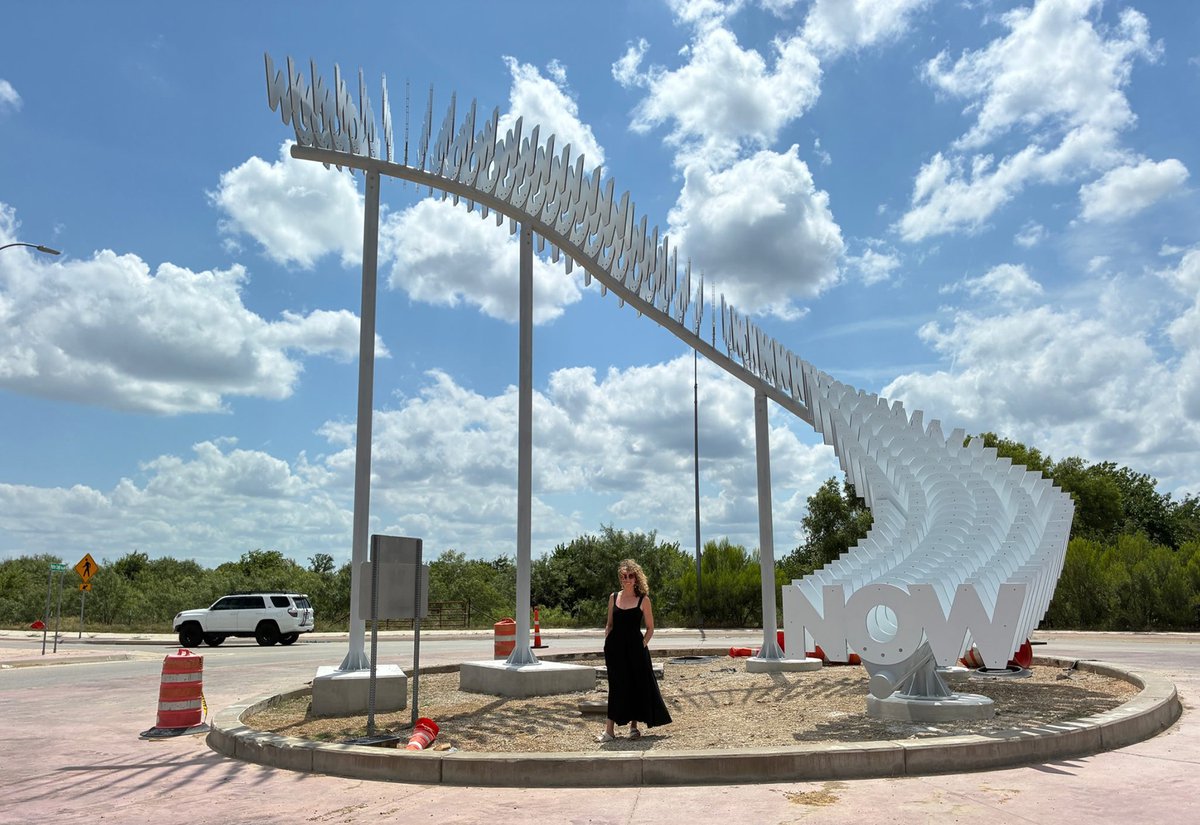Roundabouts aren’t usually places where you stop and ponder existence. But at Marine Creek Parkway and Longhorn Road, Denton-based artist Alicia Eggert has turned the everyday traffic circle into a meditation on time. Her sculpture, “A Very Long Now,” is part of a curated public art effort along Marine Creek Parkway, according to Fort Worth Public Arts.
Curated by Iris Bechtol, the work is Eggert’s attempt to give form to time itself. Stationary yet rhythmic, the sculpture mirrors the motion of cars circling the roundabout, a visual tick of the clock in steel and light. Sixty repetitions of the word “NOW” climb in a spiral, each one so thin it almost disappears from the side. Together, they form a towering 29-foot gesture — linear yet cyclical, finite yet hinting at the endlessness of time.
In other words, each NOW is a reminder: time is continuous, a bridge between what was and what will be. Though the spiral has a visible end, Eggert’s sculpture suggests an upward and outward reach that could extend indefinitely — a future still very much alive in the present moment.
Eggert designed this sculpture in collaboration with architect H James Lucas. Spanning 36 feet wide and 25 feet deep, the sculpture was fabricated by 900 North Studios, engineered by AJ Kuhn, and installed with civil engineering guidance from Jim DeOtte. Local contractor Northstar Construction handled the foundation and hardscaping.
Inspired by physics and philosophy, Eggert borrows the methods of commercial signage to create works that linger in the imagination. Her installations have appeared on rooftops in Russia, bridges in Amsterdam, and isolated islands in Maine, inviting viewers to consider their place in the world.
Eggert’s work has been exhibited at the Renwick Gallery at the Smithsonian, the CAFA Art Museum in Beijing, the Philadelphia Museum of Art, and the Telfair Museums. But at the end of the day, she’s a tenured Associate Professor of Studio Art at the University of North Texas — who just so happens to have gifted Fort Worthians a striking new sculpture to ponder.
“The word ‘Now’ can have very different meanings when it is used in different contexts,” Eggert said in regard to her sculpture. “But our capacity to create a better future seems like it might depend on our collective ability to conceive of ‘Now’ in much longer terms — one that is longer or wider than our narrow fields of vision can contain. How would our behaviors change if we imagined a ‘Now’ that extends 10,000 years into the past, or 10,000 years into the future?”
